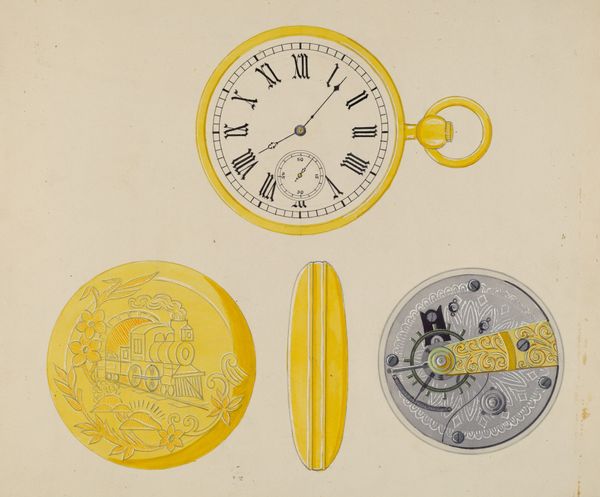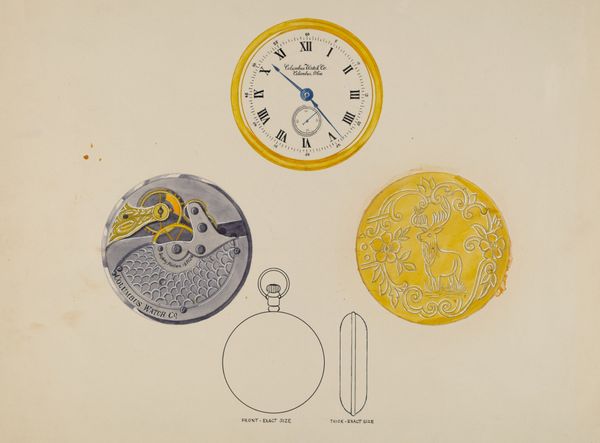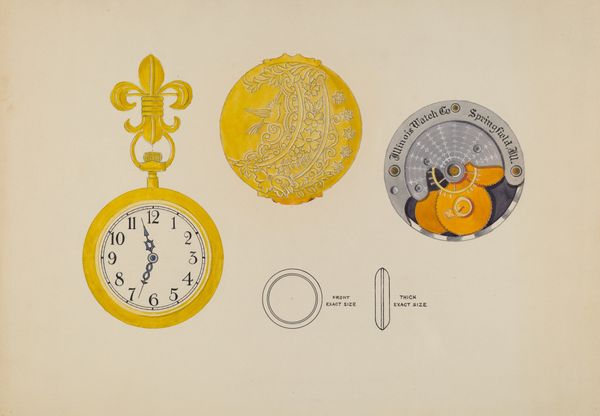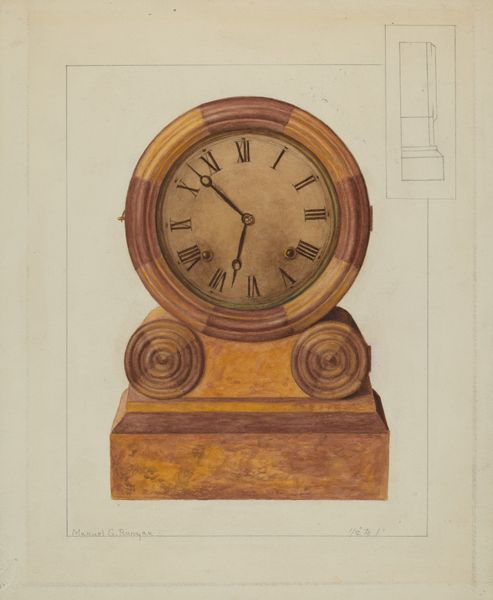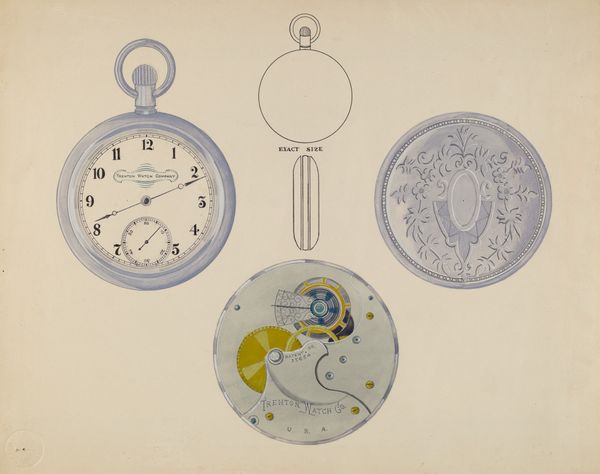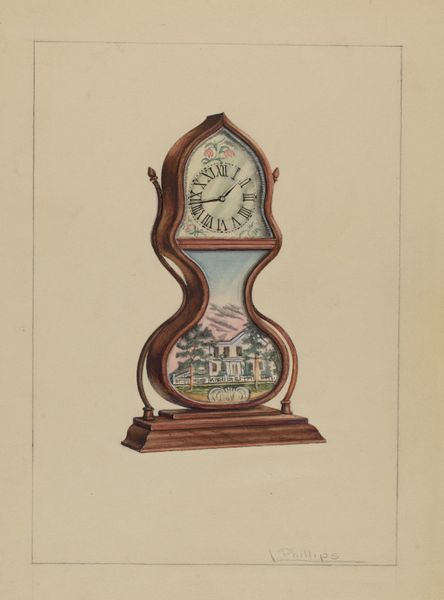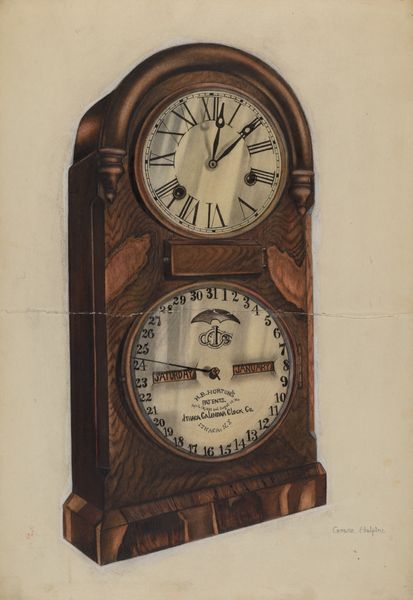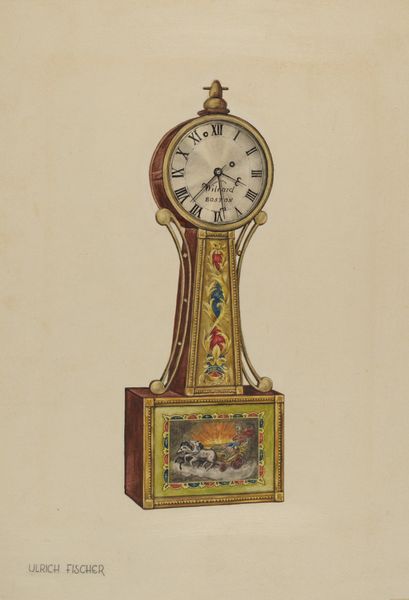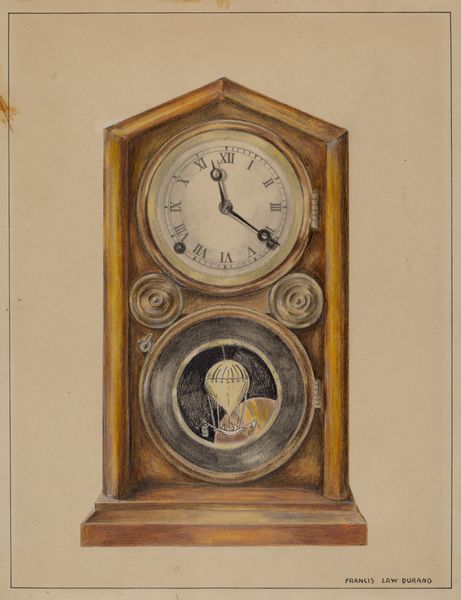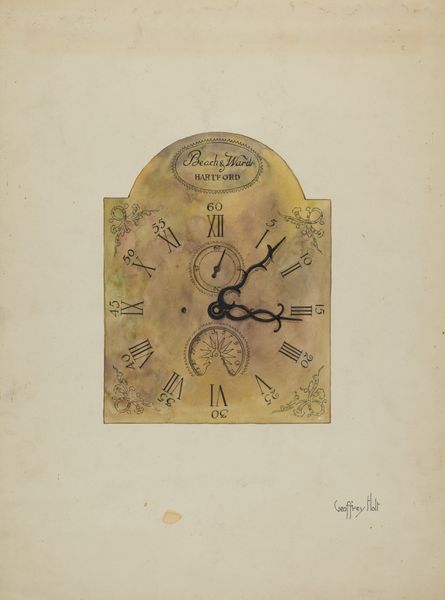
drawing, graphic-art, print
#
drawing
#
graphic-art
# print
Dimensions: overall: 24.8 x 31.2 cm (9 3/4 x 12 5/16 in.)
Copyright: National Gallery of Art: CC0 1.0
Editor: This is Harry G. Aberdeen’s “Gold Watch and Frame,” a drawing from around 1936. It shows the front, back, and side of a pocket watch with incredible precision. There's something almost scientific about it. What stands out to you about this piece? Curator: I’m drawn to the seemingly contradictory aspects of the work. We see the depiction of a luxury item, a gold watch no less. However, it’s presented not as a status symbol, but as a technical illustration. Notice how it’s presented almost like a patent design, with different views labelled "front", "back," and "side," and noting it’s "exact size". Who was the audience for this piece, do you think? Editor: Perhaps watchmakers themselves? Or even someone interested in the mechanics of timekeeping. Curator: Precisely! And in the context of the 1930s, during the Great Depression, this image presents an interesting duality. While luxury goods still existed, there was also a heightened awareness of labor and production. The precision of the drawing, combined with the technical labels, elevates the everyday and perhaps implies a hidden complexity behind such a fancy consumer item. The watch’s price is even displayed right there. Editor: So you’re saying it’s less about flaunting wealth and more about examining the socio-economic implications of mass production. Curator: In part, yes. It makes me question what purpose this artwork fulfilled during its time. Was it commentary, a celebration of design, or purely functional? Or even a sly reflection on worth during economic hardship? Editor: I hadn't considered the Depression-era context, it’s added a layer of meaning I completely missed before. I came in seeing only a pretty drawing, now I see the complexities around wealth and design it hints at. Curator: Exactly. It highlights how something seemingly simple can carry so much historical weight and speak to the complex relationship between art, industry, and society.
Comments
No comments
Be the first to comment and join the conversation on the ultimate creative platform.
